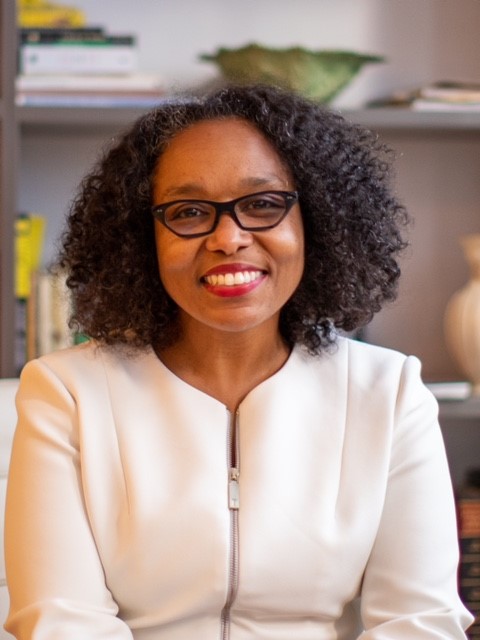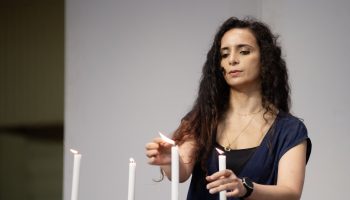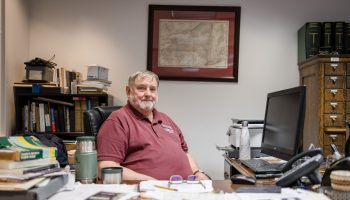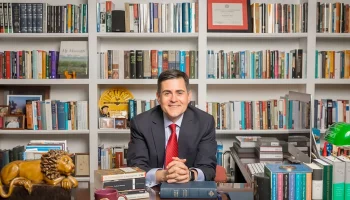
According to Forbes, to qualify as an “ultra-high-net-worth individual” — UHNWI — one must own liquid assets surpassing $30 million. The liquid assets of a very-high-net-worth individual (VHNWI) are between $5 and $30 million, and those of a high-net-worth individual (HNWI) are between $1 and $5 million.
Of the world’s individuals having a net worth of liquid assets exceeding $1 million, UHNWIs comprise 1.1%. The highest number of millionaires — over 23 million people — live in the United States.
In 2023, the UHNWI population grew by 7%, according to Altrata’s “World Ultra Wealth Report 2024.” It possessed a combined wealth of $49 trillion in 2024, which is greater than the GDP of both the United States and China.
Because personal and family health-related issues are a universal challenge, some UHNWIs are being educated by their financial advisers as they age. No matter one’s financial wherewithal, everyone can benefit from learning more about, and following through with, best wellness practices.
At 3 p.m. Saturday in the Hall of Philosophy, Chautauquans — no matter their net worth — will have the opportunity to gain insight into valuable health, wellness and well-being information when Kim Henderson, M.D. gives an interactive talk titled “Unlock the Power of Health and Wealth.”
Henderson, who will be speaking for the Chautauqua Women’s Club and its Contemporary Issues Forum, is a managing director at the multinational investment bank and financial services company Morgan Stanley. She is also Head of Wealth Management Health and Wellness Education within the company’s Family Office Resources, which works in conjunction with an individual’s private wealth adviser team.
In this capacity, Henderson “highlights opportunities for clients to consider healthy choices, spearheads thought leadership on healthcare issues facing ultra-high-net-worth clients, shares best wellness practices and discusses the impact of health and medical developments with clients and their families.”
“Medicine is the great equalizer,” Henderson said. “I can’t think of what would be different for an (UHNWI) versus us mere mortals. People want a place they can trust, to ask questions. In health and wellness, on the inside we’re all the same — we all have got similar internal plumbing. I always like these conversations. I want to be a resource because some people don’t like asking their doctors. And here, there’s no co-pay.”
In order to change the way people “think about aging, vitality and financial well-being,” she will “guide (Chautauquans) through the latest research and real-world strategies at the intersection of personal health and financial security, showing how the choices you make today can help you live longer, feel stronger and retire with greater peace of mind.”
Henderson decided early on that she wanted to be a medical doctor.
“My uncle was a doctor, and I was fascinated with him and all things medicine,” she said.
As she told reporter Karen Juanita Carrillo from the Amsterdam News in December 2024, when she was young she tagged along with her mother, Joan Henderson, who as an undergraduate at Teachers College — now Rutgers University — in Newark, New Jersey, had joined Alpha Kappa Alpha, one of the first Black sororities in the United States.
Each month, when Joan Henderson — who had in fact become a teacher — participated in AKA community events, including food preparation, toy drives and children’s book collections, Henderson joined her and began sensing that helping others was her calling.
“At my core, I’m a helper,” she said. “I was a babysitter, a waitress at Friendly’s … with a red and white apron and I joined GERMS (Georgetown Emergency Response Medical Service) … (at) the only college that was in the universe for me.”
Trained as emergency medical technicians — EMTs — Henderson and other college students in GERMS drove around campus in an “ancient ambulance” picking up sick kids.
“I wanted to be helpful and useful,” she said. “That didn’t end when I joined the firm. I don’t have a stethoscope, but I educate clients.”
Taking the MCAT exam required when applying to medical schools and the LSAT exam required by law schools, Henderson said she applied to Georgetown’s law and medical schools, thinking that if she was accepted to one of them, she’d go there.
“My mother was a very conservative lady, and she didn’t want her daughter running around D.C. after college,” she said. “I was trying to not go back to my mother’s house.”
Aware of both applications, Henderson said Georgetown gave her a call. Law school came first.
“I was the ripe old age of 21,” she said. “I’d not thought of it a lot. That became my journey. Georgetown Law was amazing. Madeleine Albright was Secretary of State. It was nothing for Ruth Bader Ginsburg and other (U.S. Supreme Court) justices to come to Georgetown Law. It’s on Capitol Hill.”
According to Carrillo’s reporting in the Amsterdam News, Henderson met an inspiring law school professor with a Doctor of Medicine who encouraged her to enroll in the Georgetown Experimental Medical Studies program. GEMS is a “one-year, post-baccalaureate, non-degree educational experience” comparable to the first year of medical school that “expands students’ medical science knowledge and enriches critical thinking and test-taking skills.”
“I graduated with my (Juris Doctor) in June, and then started my trek through medical school in July,” Henderson said. “ … Medicine is an unforgiving career.”
During these challenging years, Henderson said, she met a Georgetown “Hoya” who became her boyfriend and then her husband after they married on campus at Dahlgren Chapel of the Sacred Heart.
After completing her Doctor of Medicine in 2000, while pregnant, she embarked on her residency — her post-graduate training program. She chose emergency medicine at George Washington University in Washington D.C., where she had undertaken her internal medicine internship. In late October, she gave birth to her first son.
“It wasn’t the thing,” Henderson said. “People said, ‘How dare you get pregnant.’ … I was back at the post on Jan. 1. I had a good time as a resident. I got to use my M.D. on (Capitol) Hill in my fourth year. Congressman Donald Payne from New Jersey represented a very inner-city population in Newark (that had serious health) issues.”
Tying up her residency “with a bow” in 2004 — certified by the American Board of Emergency Medicine — Henderson headed to Manhattan.
There she joined the faculty at Beth Israel Medical Center on First Avenue and 16th Street, where her “second son made his debut.” Later, it became Mount Sinai Beth Israel Medical Center, which closed in April 2025.
“In New York, many of the older institutions have suffered some degree of contraction over the years,” she said.
Henderson served as an attending emergency medicine physician supervising residents and practicing medicine fulltime at Mount Sinai Beth Israel. She focused on urgent care and provided bedside clinical training for nurse practitioner students.
“ER docs tend to be a wandering type,” she said. “We know a little about a lot of medicine, which makes us useful.”
For 14 of the 18 years during which Henderson served as a practicing physician affiliated with several hospitals within the boroughs of New York City, she was also senior medical director at CVS Health. As part of “Big Pharma,” she supported “enterprise-side initiatives, pharmacy benefit management sales strategies and retail health programs including oversight of MinuteClinic nurse practitioners.”
Regarding MinuteClinics, Henderson said, “Nurses and nurse practitioners have an incredible secret sauce. They expand access to patients. (Doctors are allotted) 10-minute appointments. … You can’t know the patient and become partners in 10 minutes. Nurses and nurse practitioners have the luxury of time. They make patients comfortable and get to know them. There’s a relationship. Clients would come back again and again because they knew their nurse practitioner would be there. … We need these other options.”
Henderson said that during her time at CVS, the number of MinuteClinics increased from 1,500 to thousands of clinics.
In her recorded interview with Greg Bartalos on July 22, 2025 for Barron’s “The Way Forward,” Henderson said that for her and many other physicians, the COVID-19 pandemic was an inflection point.
“I knew that I wanted to do my part to help. As I was in one of the epicenters of the pandemic — I was still living in New York City — that was the time where they called all physicians back no matter what you were doing or where you were, if you were somewhere that you could be helpful. In New York, they were begging and pleading. So, of course, I went back to the emergency room where it all began, and I’ve never felt so helpless as a doctor. … Entire family members, one after the other, would come in during COVID and have the same terrible outcome.”
For The Chautauquan Daily, Henderson said that “once the pandemic changed to an endemic, I had the amazing opportunity to transfer from colleagues to clients at Morgan Stanley.”
In 2020, the company was seeking an associate medical director.
“I asked what everyone asks,” she said. “What does a doctor do within an investment bank? Believe it or not, clients are people, too. They get old, have parents. Medicine is confusing; it’s messy. Oftentimes, you need guidance. What does this mean — these acronyms? Everyone is interested in longevity. … I help clients day in and day out with physical, mental and social issues.”
What has kept Henderson going day in and day out is her family, including her mother, without which “none of this — absolutely zero — would be possible.”




